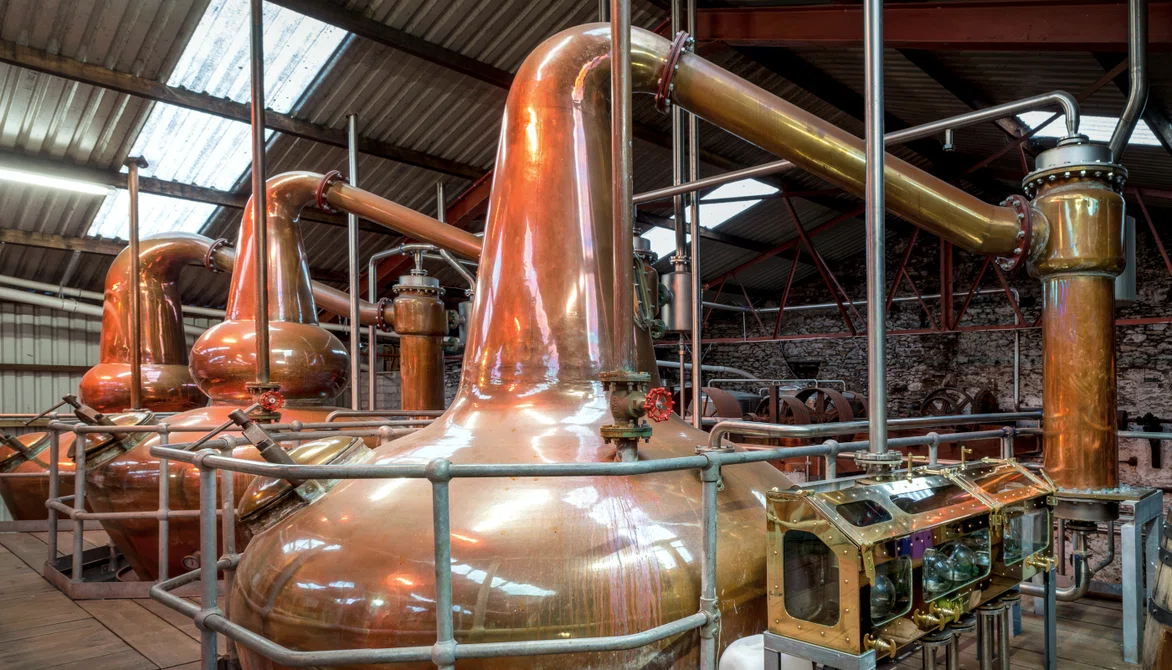How is Whisky Made?

The basic tenets of making whisky are deceptively simple. There are 5 steps that must be taken to make whisky, but make one wrong move and the whisky will suffer. This shouldn’t stop you from getting into whisky-making yourself, however. Whisky-making can be an exact science, but even a beginner’s batch may be worth the effort.
Use the information below to learn how whisky companies have been making whisky for over 200 years. Maybe it’ll inspire you to put together your own make-shift distillery at home.
Malting
Malting
The first step in making any grain alcohol is converting the sugars from the grains into alcohol. When making whisky, barley grains are used. First, they are soaked in tanks of water, then left to open up and begin the germination process. This takes place on large malting floors and can take a few days.
It is important that the grains aren’t allowed to sprout, since that would add unwanted flavors to the final whisky product. Right before they start sprouting and growing into full plants, the grains are taken out of the water and are heated up to stop the germination process from continuing.
The heating process takes place in large kilns at about 120 F. The material used to heat the kiln, such as peat, will have an effect on the whisky, as well as the length of the time the barley is allowed to dry out.
Once the barley is completely dry, it is referred to as a malt, and can be ground down to create a grist, which is needed for the next step.
Mashing
Mashing
The warm water temperature is gradually increased, allowing as much sugar to be dissolved and collected as possible. Once at least 2 batches of wort are collected, the fermentation process can begin.
Fermentation
Fermentation
There are many things at this stage that can ultimately affect the final product, from the container (the washback) the wort is left to ferment in, to the type of yeast that gets used.
Once the fermentation is over, the yeast that has now ‘died’ will be laying at the bottom of the washback. This must be carefully strained and separated from the liquid, which is now referred to as the wash.
Distillation
Distillation
If making beer, instead of distilling, you would move onto brewing. Vodka and gin both require distillation, but of course, they start with completely different ingredients.
During distillation, the wash is put into a still where it is heated up. The liquid vapor rises to the top of the still and condenses. This condensation is collected and moved to another still where it goes through distillation again. Whisky is distilled 3 times, which helps get rid of all imperfections.
The alcohol created from the beginning of the distillation is called a foreshot, and the alcohol from the end is called a feint. Both the foreshot and feint are not to be drunk. They are either too strong and pungent or too weak. It is the alcohol collected from in between the two, the heart, that becomes whisky.
It takes a very keen, experienced palette to be able to tell when the foreshot stops and the feint starts. Home-brewed whisky made by new whisky makers will often contain portions of the foreshot and feint, making the whisky unenjoyable. But, a few taste tests and practice batches should help any beginner produce a great whisky.
Maturation
Maturation
While sitting inside of the oak casks, the whisky will take on certain characteristics of the oak, such as an intense, full aroma. The location of the cask will also affect the whisky, as the air quality, temperature, and humidity will be different depending on the warehouses and facilities the whisky matures in.
Whisky is required to mature for a minimum of three years to qualify as whisky, however, the maturation process usually lasts much longer. Some companies even mature their whisky for as long as 20 years.
Whisky doesn’t mature with age, though. They mature by absorbing qualities of the case that they’re in -- an oak cask. Once the whisky is bottled, it won’t be going through any changes. So, unlike wine, drinking a 100 year old whisky won’t be much better of an experience than drinking one made 10 years ago.
SEE ALL BLOG ARTCLES
SEE ALL BLOG ARTCLES
FIND SELECT CLUB WHISKY NEAR YOU
FIND SELECT CLUB WHISKY NEAR YOU


